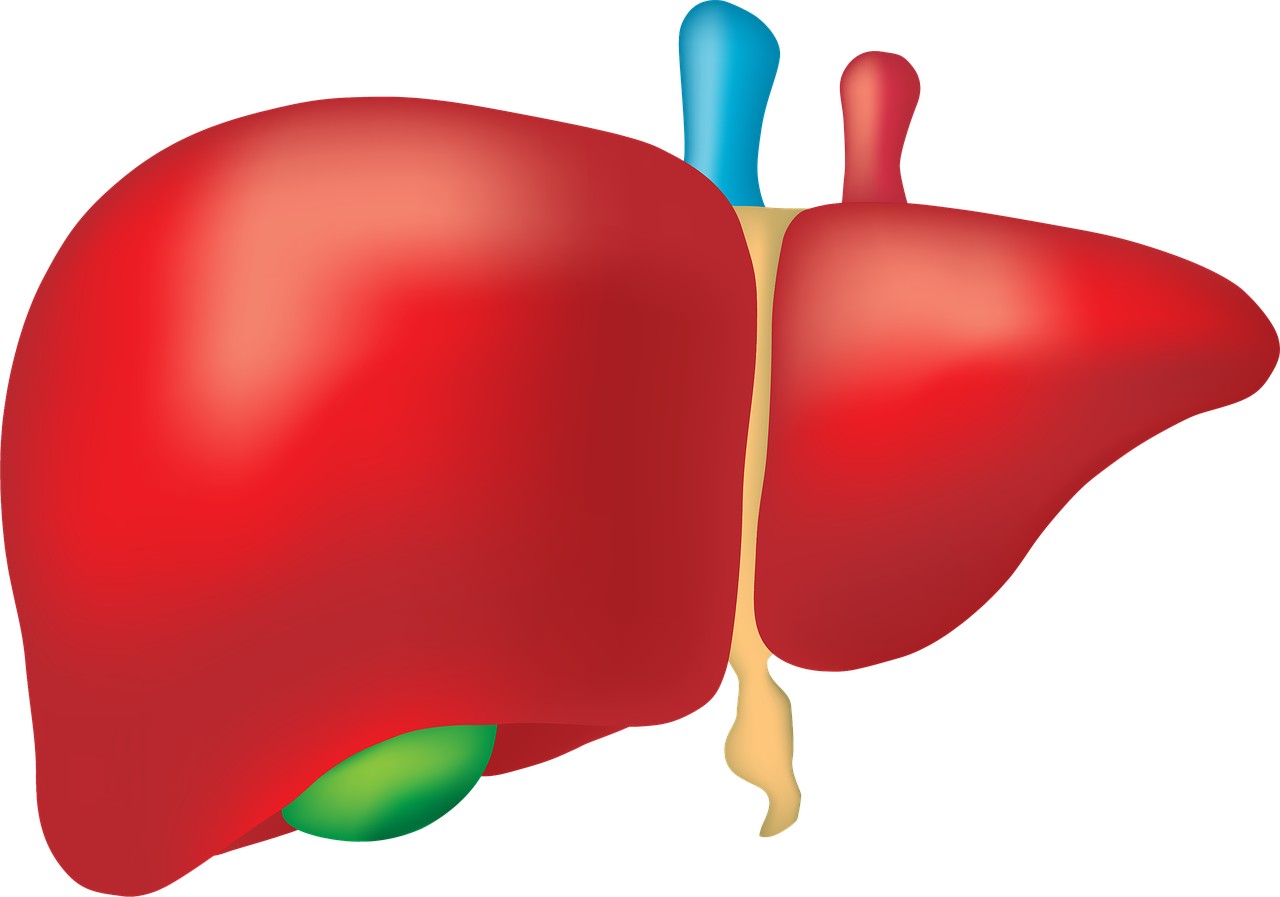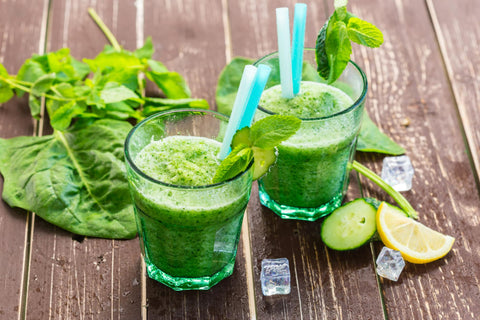Liver is one of the hardest working organs in the body. It is responsible for proper detoxification, digestion of fats, metabolism as well as synthesis, conversion and storage of many vital substances. Unfortunately, modern lifestyle, unhealthy diet, high levels of toxins, and regular use of stimulants and medication force liver to overwork leading to its dysfunction.
Types Of Fatty Liver
There are two types of fatty liver, alcohol-related and non-alcohol related.
Alcohol-Related Fatty Liver
Alcohol-related fatty liver is caused by regular overconsumption of alcohol. Even if you drink every day for two or three weeks you may start developing fatty liver because liver turns excess glucose (sugar) from alcohol into fat and accumulates it.
Fortunately, if you stop drinking, after two weeks without alcohol your liver should start shedding the excess fat. If you don’t quit drinking, that fatty liver will progress into liver disease, alcoholic hepatitis and cirrhosis.
Non-Alcoholic Fatty Liver
Non-alcoholic fatty liver is increasingly common, especially in Western nations. In the United States alone almost 100 million people are diagnosed with this condition!
As the name implies, fatty liver disease is caused by too much fat stored in liver cells. Non-alcoholic fatty liver disease is a liver condition affecting people who drink little to no alcohol.
Non-alcoholic steatohepatitis is a more serious form of fatty liver, involving liver inflammation, which may progress to scarring and irreversible damage, cirrhosis and liver failure similar to the one caused by heavy alcohol use.
Fatty Liver Symptoms
Non-alcoholic fatty liver disease usually causes no signs and symptoms for a long time. When it does, they may include pain in the upper right abdomen, enlarged liver and fatigue.
Later on when the condition causes inflammation and liver damage the symptoms may include abdominal swelling, yellowing of the skin and eyes (jaundice), enlarged spleen, enlarged blood vessels beneath the skin, enlarged breasts in men, and red palms.
.jpg)
Key Causes For Fatty Liver
It is not clear why some people accumulate much more fat in the liver than others (even though their diet might be similar) or why some fatty livers develop inflammation which progresses to cirrhosis. However, we know that the following factors are linked to both non-alcoholic fatty liver and non-alcoholic steatohepatitis:
Regular consumption of foods containing refined sugar, high glucose / fructose syrup (found in many products), white flower products, fruit juices, refined carbohydrates, wheat (including whole wheat breads and chapattis). Too much refined sugar, especially fructose can be very dangerous because liver always converts excess sugar to fat and stores it. Fructose is even more dangerous than glucose because part of glucose is at least burned and converted into energy while excess is converted to fat and stored but fructose from sucrose (refined sugar) and high glucose /fructose syrup is almost entirely converted to fat.The best example of sugar combined with carbs leading to fatty liver is “foie gras”, the French delicacy made from goose or duck fatty liver. It is made by force-feeding the animals a mixture of corn with sugar, intentionally creating fatty livers. Since corn and sugar are high in glycaemic index there is so much sugar released from the large quantity of corn mixed with sugar that animals can’t keep up with it and their livers convert it to fat and store. And it is exactly what happens when people eat foods high in sugar, refined carbohydrates (deprived of fibre grains), cornflakes, fructose, mashed potatoes (without skin), etc. They turn their own livers into a “foie gras” or a non-alcoholic fatty liver!
One doctor mentions about 12-year-old boys with fatty livers required liver transplants developed as a result of drinking soda for years. Fructose, the primary sweetener in sodas, is the main cause of the constantly growing prevalence of the non-alcoholic fatty liver disease.
Dietary fructose consumption in industrialized countries has increased in parallel with the increase in fatty liver, obesity, and diabetes and there is a direct association. The increased consumption of high fructose corn syrup, primarily in the form of soft drinks, is linked with complications of the metabolic syndrome and an increase in liver enzymes. Unlike glucose, fructose stimulates de novo fatty acid synthesis (synthesis of fatty acids, beginning with acetyl-CoA) directly and promotes weight gain.
- Non-alcoholic fatty liver is closely linked to chronic high blood sugar levels (many people develop prediabetes without knowing about it) and insulin resistance (cause of type 2 diabetes), in which body cells don’t take up sugar from the blood because they seem to be resistant to the hormone insulin which normally stimulates cells to absorb more sugar from the blood when its levels are higher than normal. Since insulin is not able to make cells absorb sugar from the blood pancreas produces even more insulin trying to force cells to open sugar channels. But since primary job of insulin is to convert sugar into fat and store it in liver increased insulin levels lead to accumulation of large amounts of fat in the liver causing fatty liver disease.

Other Risk Factors And Possible Causes
-
Metabolic syndrome which involves high blood pressure, high blood triglyceride levels, increased abdominal fat, and insulin resistance (poor ability to use the hormone insulin) may lead to non-alcoholic fatty liver.
-
Bad fats (margarines and high in pro-inflammatory omega 6 fatty acids commercial oils such as corn oil, sunflower oil, soya oil, vegetable oil, etc.).
-
Overweight or obesity (excess fat tissue especially in abdomen area). However, some people who are not overweight may still accumulate so called visceral (hidden) fat which covers internal organs leading to type 2 diabetes, insulin resistance and fatty liver.
-
High triglyceride and cholesterol levels contribute to fatty liver as both substances are forms of fat.
-
Regular use of certain medications, spirit vinegar, recreational drugs and stimulants as they can contribute to the liver damage.
-
High levels of toxins such as heavy metals in the body.
-
Deficiency of vitamins, minerals and especially antioxidants such as glutathione, super oxide dismutase (SOD), alpha lipoic acid, etc.
-
Polycystic ovary syndrome (PCOS) seems to increase the risk of fatty liver.
-
Underactive thyroid (hypothyroidism).
-
Underactive pituitary gland (hypopituitarism).
-
Inherited disorders of sugar metabolism (galactosemia or glycogen storage disease).
-
Overconsumption of meat and dairy (especially heated) products.
The above factors encourage the accumulation of fat in the liver, leading to liver inflammation and non-alcoholic steatohepatitis, which may eventually cause a build-up of scar tissue (fibrosis) and cirrhosis of the liver.
Nutritional Supplements
-
Take a good quality nutritional supplement that contain as many of the following liver health promoting ingredients as possible: B Vitamins, especially Choline and Inositol (as they help avert excessive accumulation of fat in the liver), Artichoke, Dandelion (both aid digestion and support liver by detoxifying and helping maintain proper bile flow), Curcumin extract from Turmeric (contains natural anti-inflammatory properties), Milk thistle (contains Sylimarin that may help regenerate damaged liver tissue), Amino acids L-Cysteine and L-Glutamate (they help boost levels of Glutathione, body’s most powerful antioxidant and liver detox aid)
-
According to a study results, Chlorella and Spirulina may be very beneficial for people with fatty liver and hepatitis C infections! The scientists treated patients who suffered from chronic hepatitis C with Chlorella. After 3 months of treating patients with relatively small doses of Chlorella the researchers discovered that the condition of 70% of the patients significantly improved. Chlorella is also very helpful for individuals with fatty liver as it is high in excellent quality protein and very high in chlorophyll that boosts energy and helps detoxify the liver. In addition, the immune system of the patents treated with Chlorella was stronger and almost 80% of them reported increased energy levels. The scientists also noted that the chlorella didn’t cause any negative side effects.
-
A similar positive results were achieved by another group of scientists who treated participants with either Spirulina or Sylimarin (an active ingredient found in Milk thistle) with no negative side effects. The researchers noted that according to the study, which was published in 2012, Spirulina was slightly more effective than Milk thistle.
-
Some sources suggest that activated Charcoal, Bee Propolis and Ginger seem to be excellent liver health aids.
-
Researchers provide some evidence that the following Probiotic strains may be very beneficial in maintaining liver health: L. rhamnosus GG (known as LGG), L. rhamnosus CNCM I-4036, L. paracasei CNCM I-4034, B. breve CNCM I-4035, B. lactis B1-04, B. longum BB536, L. plantarum CECT7527, L. plantarum CECT28, L. plantarum CECT29.
-
Boost Glutathione levels which is a most powerful of all antioxidants and strengthens the immune system and is one of the most effective remedies against liver problems. It is also important to provide body with ingredients that increase glutathione production in the liver by taking Alpha Lipoic Acid, Turmeric, Milk thistle, L-cysteine or NAC (N-acetyl cysteine), Bilberry, Vitamin C, Asparagus, Broccoli, Peaches, Avocado, Spinach, Garlic, Squash, Grapefruit. Read about all the best methods to increase GLUTATHIONE >
-
Malic acid helps to detoxify liver. Being an effective metal chelator capable of binding to toxic metals such as lead that accumulate in human body (including liver), malic acid is effective in detoxifying the body and liver. Malic acid also helps to lower the amount of cholesterol and fat in the liver thus helping people with fatty liver.
-
Take Vitamin D3 (5000 IU after breakfast) because almost all patients suffering from inflammations (including hepatitis) are deficient in Vitamin D.
-
Magnesium citrate or another well absorbed magnesium such as bisglycinate: 2 times a day 150-200 mg. The more vitamin D3 is used the more magnesium must be taken as D3 leads to magnesium deficiency.
-
Vitamin B12: 1,000 to 2,000 mcg a day under the tongue (must be sublingual Methylcobalamin). Many people with inflammations, weak immune system and autoimmune diseases have low levels of this most important vitamin. Methylcobalamin form of vitamin B12 also helps detoxify the body and liver.
-
Externally, to improve blood circulation in the liver, regeneration and detoxification of this organ, you can carefully use hydrotherapy (water treatments) such as alternative hot and cold showers on entire body (especially liver) and/or alternative hot and cold compresses on the liver area (1-3 minutes very hot and 1-3 minutes very cold).
Beneficial Lifestyle and Nutritional Recommendations
-
Address the listed above causes.
-
Read labels and avoid foods with high-fructose corn syrup (HFCS) and sugar, fruit juices and most sweet smoothies as they also contain fruit juices (make smoothies at home).
-
Get rid of white flour products and wheat including whole wheat bread and chapattis.
-
Add healthy fats like avocados, raw coconut oil, extra virgin olive oil, flax oil, macadamia nut oil, etc.
-
Incorporate anti-inflammatory, liver-healing foods including raw vegetable juices, raw vegetable salads, spinach, broccoli, cauliflower and Brussels sprouts, collards, cabbages, arugula, and watercress, whole low-sugar fruits (grapefruits, etc.), nuts, seeds, etc.
-
Improve your metabolism through exercise.
-
Garlic and onions are sulfur-rich foods that help detox the body.
-
Often consume protein-rich foods including spirulina, chlorella, beans, organic none-GMO soya, Tofu, etc.
Sources
- Azocar J, Diaz A. Efficacy and safety of Chlorella supplementation in adults with chronic hepatitis C virus infection. World J Gastroenterol. 2013 Feb 21;19(7):1085-90.
- Yakoot M, Salem A. Spirulina platensis versus silymarin in the treatment of chronic hepatitis C virus infection. A pilot randomized, comparative clinical trial. BMC Gastroenterol. 2012 Apr 12;12:32.
- European Association for the Study of the Liver (2011, April 2). New data show non-alcoholic fatty liver disease will reach epidemic status in the
- Erin Marie McCarthy. The Role of Diet and Nutrient Composition in Nonalcoholic Fatty Liver Disease. Journal of the Academy of Nutrition and Dietetics. 2012;112:401-409.
- The Endocrine Society (2011, February 25). Fatty liver may herald impending Type 2 diabetes. ScienceDaily. Retrieved February 3, 2013, from http://www.sciencedaily.com /releases/2011/02/110224091613.htm
- Lanaspa et al. Uric Acid Stimulates Fructokinase and Accelerates Fructose Metabolism in the Development of Fatty Liver. PLoS One. 2012; 7(10): e47948.
- Rebollo et al. Way back for fructose and liver metabolism: bench side to molecular insights. World J Gastroenterol 2012 December 7; 18(45):6552-6559
- Lustig et al. The toxic truth about sugar. Nature 2012 Feb 1;482(7383):27-9
- Zivkovic et al. Comparative review of diets for the metabolic syndrome: implications for nonalcoholic fatty liver disease. Am J Clin Nutr 2007; 86:285-300.
- Image by stefamerpik on Freepik
Any information or product suggested on this website is not intended to diagnose, treat, cure or prevent any medical condition. Never disregard medical advice or delay in seeking it because of something you have read on this website. Consult your primary healthcare physician before using any supplements or making any changes to your regime.




